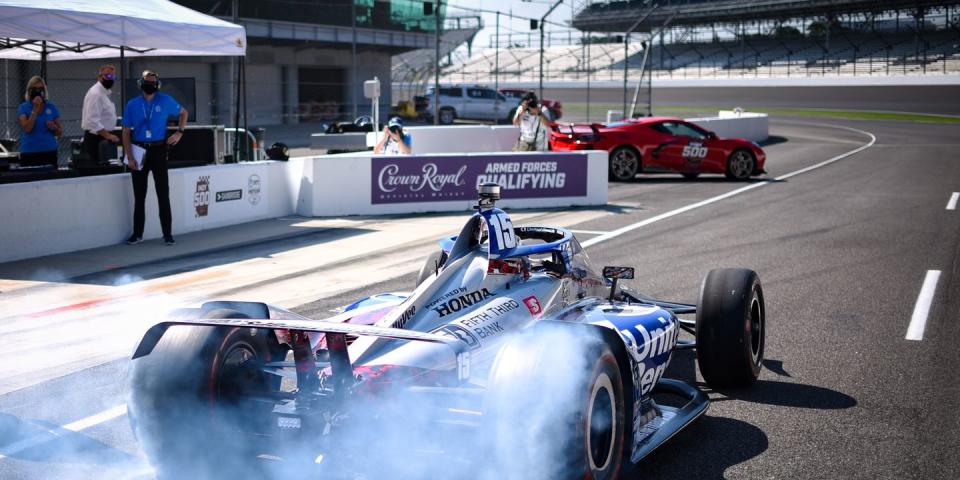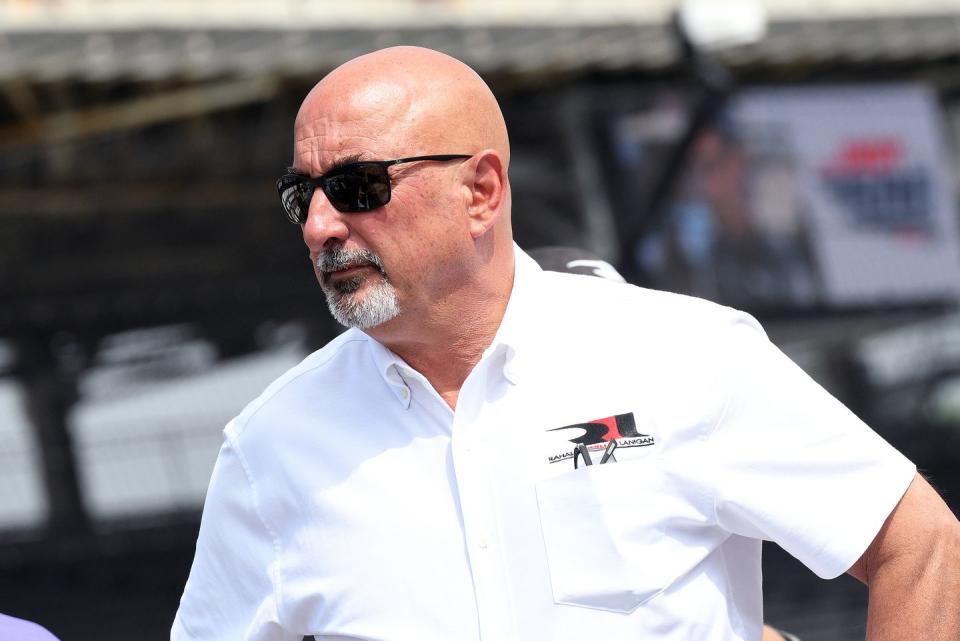IndyCar Team Owner Says 'We're All Taking It in the Shorts Financially' Right Now

Nothing has been easy in 2020.
Everything has been affected by the coronavirus pandemic. In relation to sports, some, like MLB, NBA and NHL opted to put roughly four-month pauses on their seasons, while the upcoming NCAA college football season is a mess, as some conferences continue to push forward while others, including the Big Ten the Pac-12, have opted to cancel their fall seasons entirely.
Somewhere in this cyclone of uncertainty is the NTT IndyCar Series, which was supposed to start its season on March 15 on the streets of St. Petersburg, Florida. But that’s the weekend the you-know-what hit the fan. The IndyCar season finally got going, albeit behind closed doors, on June 6 at Texas Motor Speedway, and has managed to run five more races since. It’s still anything but smooth sailing, though, as some events have been canceled entirely, while others are turned have become doubleheaders as a way to add races.

Next up in season that will be forever known as the season everything turned upside down is Sunday's 104th Indianapolis 500 (1 p.m. ET on NBC). The Greatest Spectacle in Racing was originally slated for May 24. The 500 which will not feature some 300,000 fans in attendance breaking open their wallets or screaming over the roar of 700 hp 2.2-liter twin-turbocharged V6 engines.
Mike Shank, team owner of Meyer Shank Racing and an Ohio State guy, says there were no alternatives but to finally run the Indy 500.
“If you kind of liken it to the Big Ten and what they've done (shut down fall sports), which would be a complete disaster for us if we didn't run this race or we chose not to compete like they have chosen." Shank told Autoweek. "It would wipe us out.
“I'm extremely grateful, even though Roger (Penske, IMS and IndyCar owner) didn't get what he wanted with getting people, even a limited amount, in (for the 500). He didn't get that, but he tried. All of us that are involved on the ownership side here were right with him the whole time. He was very transparent with us. We understood what's happening most of the time. There was never a question. In these owner meetings, it's a united front. I can promise you, there's no one upset. Although we're all taking it in the shorts financially right now.”
The grind to this point has been a challenge. For Bobby Rahal, co-owner of Rahal Letterman Lanigan Racing, the situation is constantly changing.

“It's been almost like living day to day,” Rahal told Autoweek. “For example, Mid-Ohio was supposed to be two weeks ago and supposed to have spectators, and next thing you know it gets shut down (and) hopefully, moved. Then, Indy is 50 percent spectators (capacity) and then it's 25 percent and then it's nobody, literally, in the space of a week or so. So it's really kept everybody on their toes as to what's possible and what isn't possible.
“You go to a race like Elkhart Lake, which had 60-70,000 people, and it's like you wouldn't know if it's 2019 or 2020. There's a lot of difference between the various tracks and where you can entertain clients or you can't. You really have to be on your toes and also figure out how many other ways we can provide value to our sponsors.
“For example, Indy isn't available for them. Of course, what mitigates that a little bit is that a lot of companies have no travel policies, so even if they wanted to come, they couldn't. They would be in violation of their own company policy. That mitigates the effect a bit. But, as I said, it's all about what can we do to maintain the level of return that our sponsors are used to without being here at the Indy 500, or other races for that matter. It's tough, but you figure out a way. We've been very fortunate that our sponsors have been quite understanding. They have been willing to move races. Instead of Long Beach or Mid-Ohio or whatever it is, they've been willing to work with us on all that stuff. We're all in this together.”
The pandemic has put a financial strain on all teams in the IndyCar paddock, so part of the challenge is evolving with the times and finding creative ways to work with current and potential sponsors. Rahal helped provide an in-depth scope on how they help deliver a return during these challenging times.
“I guess a good one would be Fifth Third Bank,” said Rahal, a three-time IndyCar champion and winner of the 1986 Indy 500. “Of course, they are now quite big in the Chicago area and have been big in Ohio, Indiana, Kentucky, the Carolinas, and we've been able to, over the last several years, ourselves, bring corporate clients to Fifth Third. We talked to our sponsors about moving banks, some accounts or what have you, or taking a look at Fifth Third. We've been successful in bringing some of these opportunities to Fifth Third, and then they've been able to submit the deal. So, that's big.

 Yahoo Autos
Yahoo Autos 